Leroy Roberts is on a mission to put Māori art on the map, one tattoo at a time.
Roberts, who hails from Ngāti Kahungunu and Falealili, is the founder of Maia Ink, a Papakura-based tattoo studio offering tā moko and kirituhi among a range of other traditional and contemporary designs.
Roberts is self-taught; he bought his first tattoo machine in 2011 and experimented with "questionable" designs on his brothers. Cut to 2024 and he could be considered one of Aotearoa's greatest tattoo artists.
The South Auckland native has amassed a roster of high-profile clients over the years, including athlete RJ Hampton and artists Kehlani, T-Pain, and Jason Derulo.
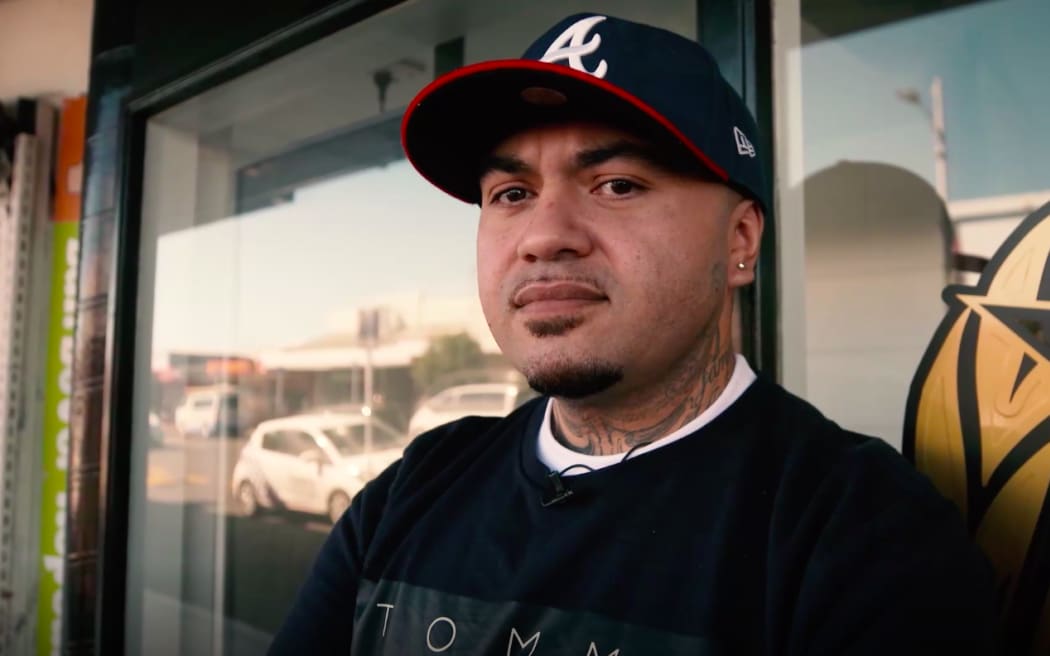
Papakura tattoo artist Leroy Roberts Photo: Nick Monro / RNZ
The latest superstar to get inked by Roberts is American RnB artist SZA, who visited his Papakura studio back in April.
"One side represents my mother's lineage, the other my father's," SZA wrote in an Instagram caption unveiling her newly inked kirituhi tattoo.
Kirituhi is a marking used for those of non-Māori heritage, while tā moko is worn only by Māori. Both reflect a person's whakapapa and journey through life.
Roberts says tattooing SZA was "a spur of the moment thing".
"We didn't plan it weeks and weeks ahead. She loves her tattoos, and she likes to get things done in different places wherever she goes. We reached out to her, and she said 'yeah', and that's it.
"She was already thinking of getting something done and we were connected with her dancers, we'd done a few of her friends who are musicians too, and that helped with the process of her selecting who to go to which is quite cool.
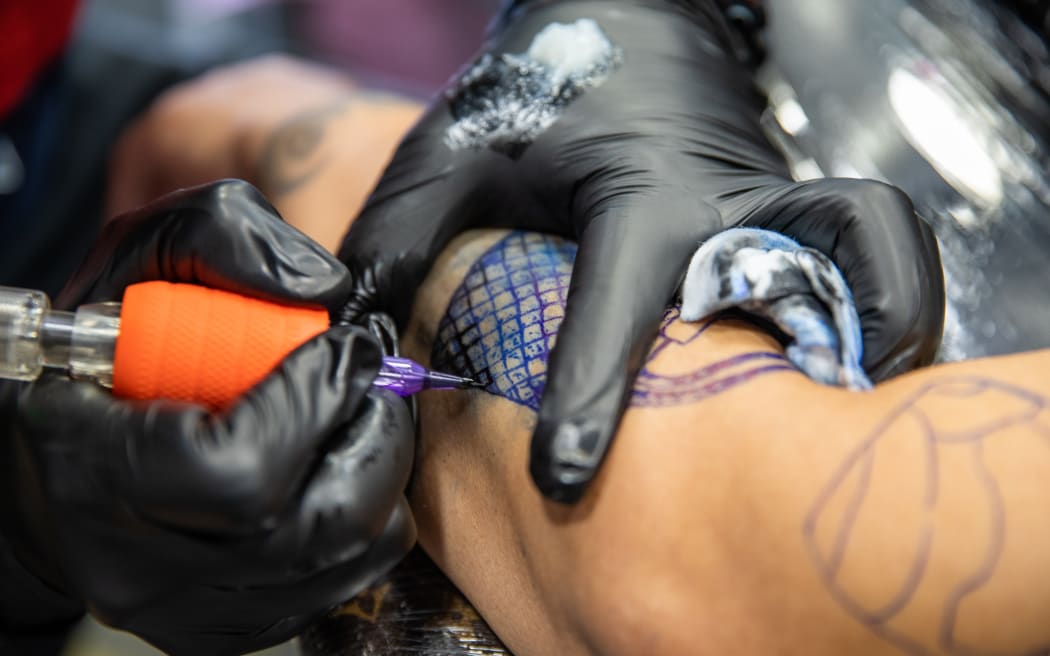
Inks at Leroy Roberts' Papakura tattoo studio, Maia Ink. Photo: Nick Monro / RNZ
"Just like any of our clients that come in, we had a kōrero together and then we selected different patterns that we thought went with her journey."
Roberts acknowledges there are conflicting opinions on whether non-Māori receiving moko is appropriate but says he has never had an issue with it.
"There are a lot of different feelings around non-Māori receiving our markings and with me, I've never had an issue. That's due to the experiences I've had since I've been doing moko."
Roberts recalls a pivotal moment in his career, in which two friends came over to get some ink done before heading overseas.
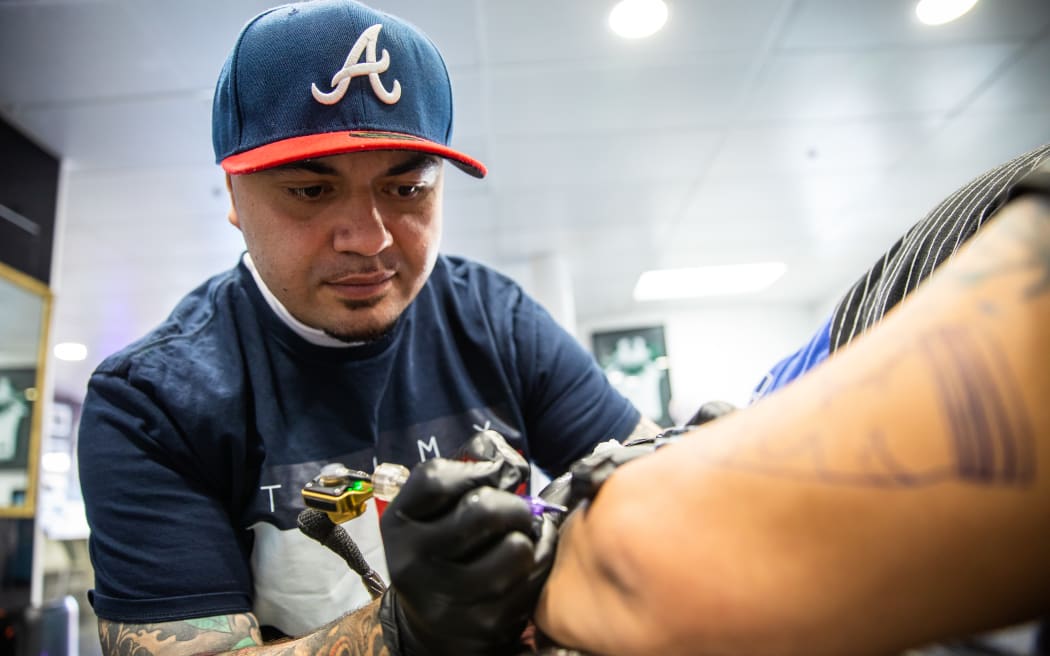
Leroy Roberts: "My dad used to say a good name is better than a pretty face." Photo: Nick Monro / RNZ
"They'd both just signed a contract to go play the Gold Coast Titans over in Australia. One was South African, one was Māori. The Māori boy goes, 'Bro, I want to get some ink done. I'm going over to the GC, gonna be on the beach, heaps of chicks over there and whatnot.' I said, 'What do you want it to represent or mean?' and he said, 'Not really fussed, just whatever.' I'm already thinking like, 'What, bro?'
"The South African boy, he's pretty quiet. I said, 'You're thinking of getting something done too?' cause he's sitting right there. He pulls out this big piece of paper, he's written out his connections to Aotearoa, he's written why he's chosen certain patterns to help him on his journey, huge pieces of information, and I'm blown away.
"Before that experience, I thought only Māori are to have tā moko, that was my thinking. Experiences like that helped me develop my testimony of, nah, it's fine by me, because I have our own principles and values that we look for in people when they receive our markings.
"Non-Māori receiving work will always be kirituhi to us. It doesn't take away any sort of mana from their piece as far as we're concerned, but we also do reserve placements for Māori and there are certain things we hold on to dearly that we won't let go of - kanohi, moko kauae - we gotta keep something."
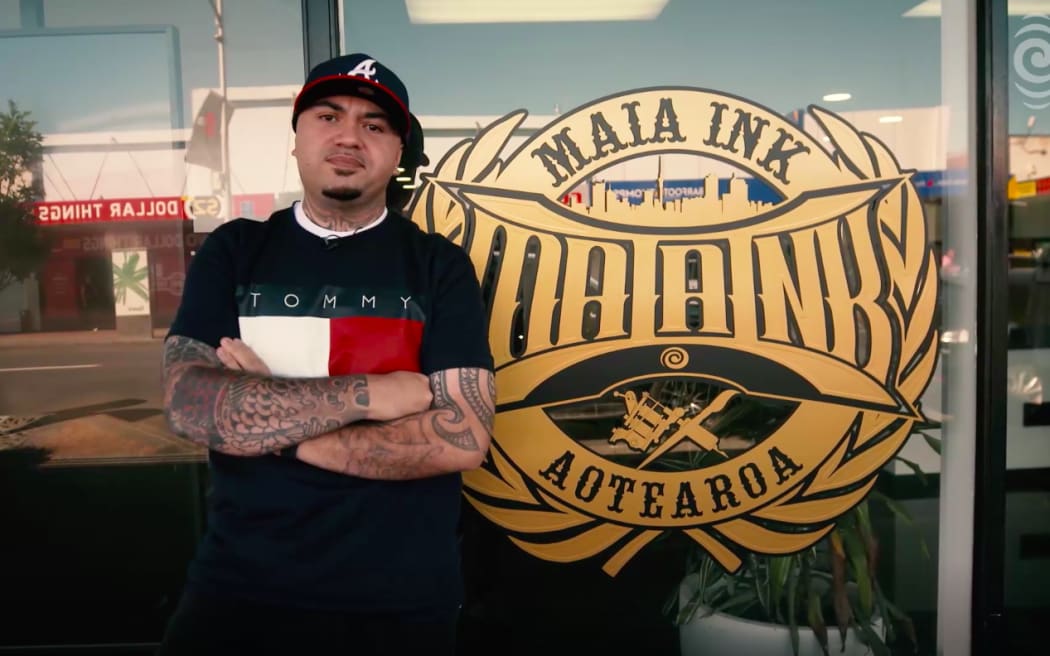
Leroy Roberts outside his Papakura studio. Photo: Nick Monro / RNZ
Roberts sees tattooing as an opportunity to spread Māori culture far and wide, while still retaining the artform.
"To be able to serve your culture, you can jump in anywhere in the timeline, whether you decide to become a kaiako and teach Māori history, or you might make songs that tell the story of our people. Our way was through art, that's the route we chose.
"Especially with these high-profile individuals who come over and receive our work - to be able to talk to 20 million people through one experience is something very special."
While Roberts has attracted international attention for his mahi, he wants to redirect the focus to social efforts in his own community.
For the past eight years he's has been running a social initiative, in which Papakura residents can get inked for the price of a bag of groceries.
"Three times a year, depending on our schedules, we tattoo people in exchange for a bag of groceries. They come in, donate it, and at the end of the day when we've finished all our tattoos, we take whatever we have for families in need in our community. We've been building a list for the past six or seven years, you'd be surprised how many people need help, not just at those festive times, but in the day-to-day things too."
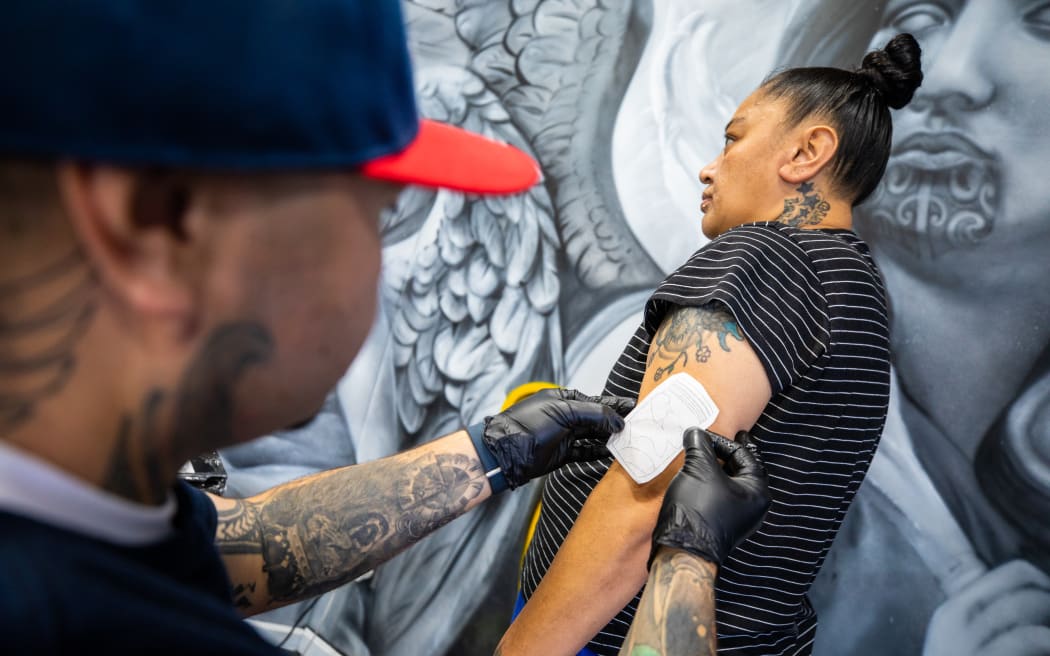
Leroy Roberts at work on a client. Photo: Nick Monro / RNZ
Maia in Māori means to be brave, bold, courageous - and it's an ethos Roberts hopes to embody in everything he does for the rest of his life.
"We're not here for too long, all this stuff's gonna go away. And when it does, the only thing left is your name. My dad used to say a good name is better than a pretty face.
"Our community does massive things for us, they kept us going through Covid and that, so we try to give back to our city as much as we can. We're in a position to help cultivate things like that where we can give back in cool, witty ways.
"I don't know how it all happened, but I'm very grateful it did."

